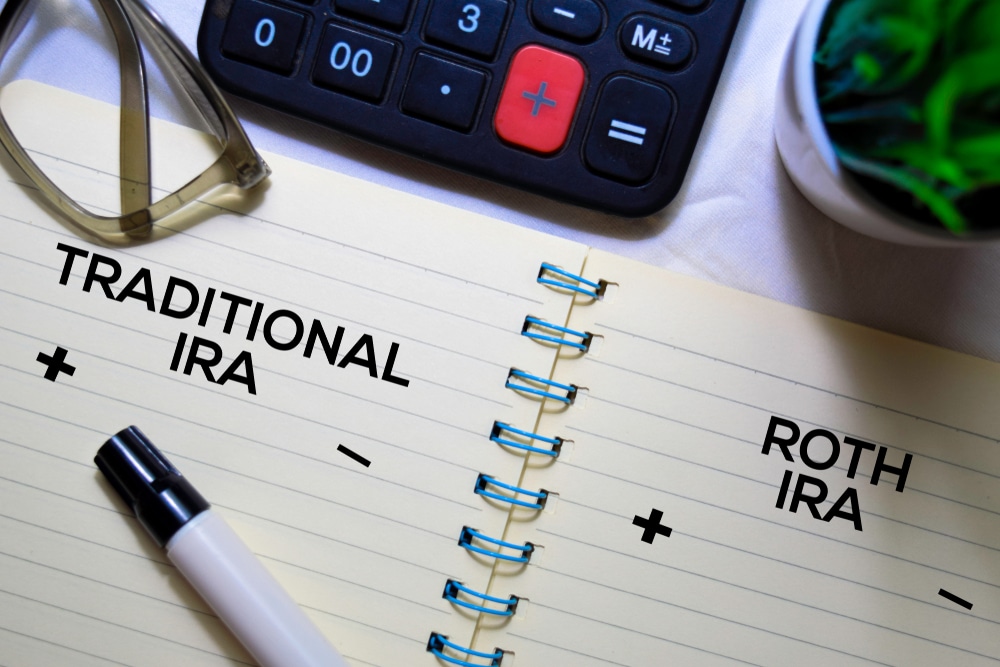Knowing how taxes work with a Roth and a regular individual retirement account (IRA) is very important. Traditional individual retirement accounts (IRAs) are funded with already-taxed cash, so the contributor gets a tax break immediately.
But when you take money, you must pay taxes on the donations and the gains. Alternatively, contributions to a Roth IRA are made with already-taxed money, meaning you have already paid taxes on this capital.
Withdrawals made during retirement, including contributions and earnings, are exempt from taxation, even though no immediate tax reduction is provided. This difference in tax treatment between the two individual retirement accounts (IRAs) can significantly impact your strategy for saving for retirement and your overall financial planning.
Maximizing Tax Benefits with Traditional IRAs
There are major tax benefits associated with traditional IRAs. Traditional IRA contributions are tax-deductible for the year of contribution on both state and federal tax returns. Your taxable income for that year is essentially decreased by this deduction, which may impact your adjusted gross income (AGI).
If your AGI is smaller, you may be able to receive additional tax benefits like the student loan interest deduction or the child tax credit that you would not otherwise be able to.
When the time comes to take money out of your account, sometimes referred to as a distribution, usually during retirement, these sums are taxed at your income tax rate. This delayed tax benefit can be especially beneficial for people anticipating a lower tax band in retirement than during their working years.
Tax-Free Growth and Flexible Withdrawals
Contributions to a Roth IRA do not lower your AGI for the year, as no tax benefit is available at the time of contribution. However, the major benefit comes later: withdrawals made upon retirement are fully tax-free.
When you withdraw the money, you won’t owe anything because you’ve already paid taxes on your contributions. Millennials and Gen Z benefit the most because they have more time to allow their investments to grow tax-free.
One of its main benefits is that Roth IRAs do not have required minimum distributions (RMDs). Because you aren’t required to take out money at any age, unlike standard IRAs, these are great for transferring wealth. With the help of this feature, your money can grow without having to be taken out of force.
It is also unnecessary for recipients of inherited Roth IRAs to pay income tax on withdrawals; however, they need to take distributions or convert the account to their own IRA. Because of their adaptability and tax advantages, Roth IRAs are desirable for long-term financial planning.
Tax Breaks
Traditional and Roth IRAs have substantial tax benefits but happen at different times. A typical IRA grows tax-deferred, so you only pay taxes on withdrawals made during retirement. Contributions are tax-deductible, which lowers your taxable income for the contribution year.
Your income and whether you or your spouse participate in an employer-sponsored retirement plan may impact the deductibility of contributions. Nevertheless, contributions to a Roth IRA are made after taxes and are not tax deductible.
On the other hand, the account grows tax-free, and when you retire, you can take out your earnings and contributions without paying taxes. Crucially, there is no minimum distribution requirement with Roth IRAs, giving investors and retirees more freedom to transfer and manage their money.
Navigating Retirement Savings
When deliberating between a traditional and a Roth IRA, it is essential to assess how your future income and corresponding tax bracket may compare to your current circumstances. This entails determining whether your Roth individual retirement accounts contributions will be taxed higher or lower than your traditional IRA disbursements.
While gross income typically drops in retirement, taxable income may not. Social Security, investment, and self-employment income may affect post-retirement taxable income.
Furthermore, ending child-rearing obligations and stopping retirement payments could mean losing out on important tax credits and deductions, which could raise taxable income even after full-time employment has retired.
Generally, if you expect to be in a higher tax bracket when you retire, you should choose a Roth IRA. On the other hand, if you anticipate moving into a lower tax band in retirement, a regular IRA might be more favorable.
Conclusion
In conclusion, regular and Roth IRAs are both important retirement planning tools and provide significant tax advantages. Whichever choice you decide on, the most important thing is to begin saving early and steadily to have a stable financial future.
Investors can also find the procedure easier because most administrative components of operating these accounts are comparable. The choice between a regular and a Roth individual retirement account ultimately comes down to personal financial objectives, tax implications, and anticipated retirement income.
Investors can maximize their retirement savings plan by carefully considering these aspects and, if necessary, obtaining expert advice.
